In this post, we’re going to visit the coastal town of Weihai in China. During the pandemic, I started a new tradition; with restaurants and bars closed, the only way to get friends together was at a rented house or at the few hotels that were still open.
For my birthday celebration during the pandemic, I got into the habit of renting homes on China’s equivalent of Airbnb and inviting my friends to join. As often is the case, with each year, I’ve refined the event and tried to up the ante.
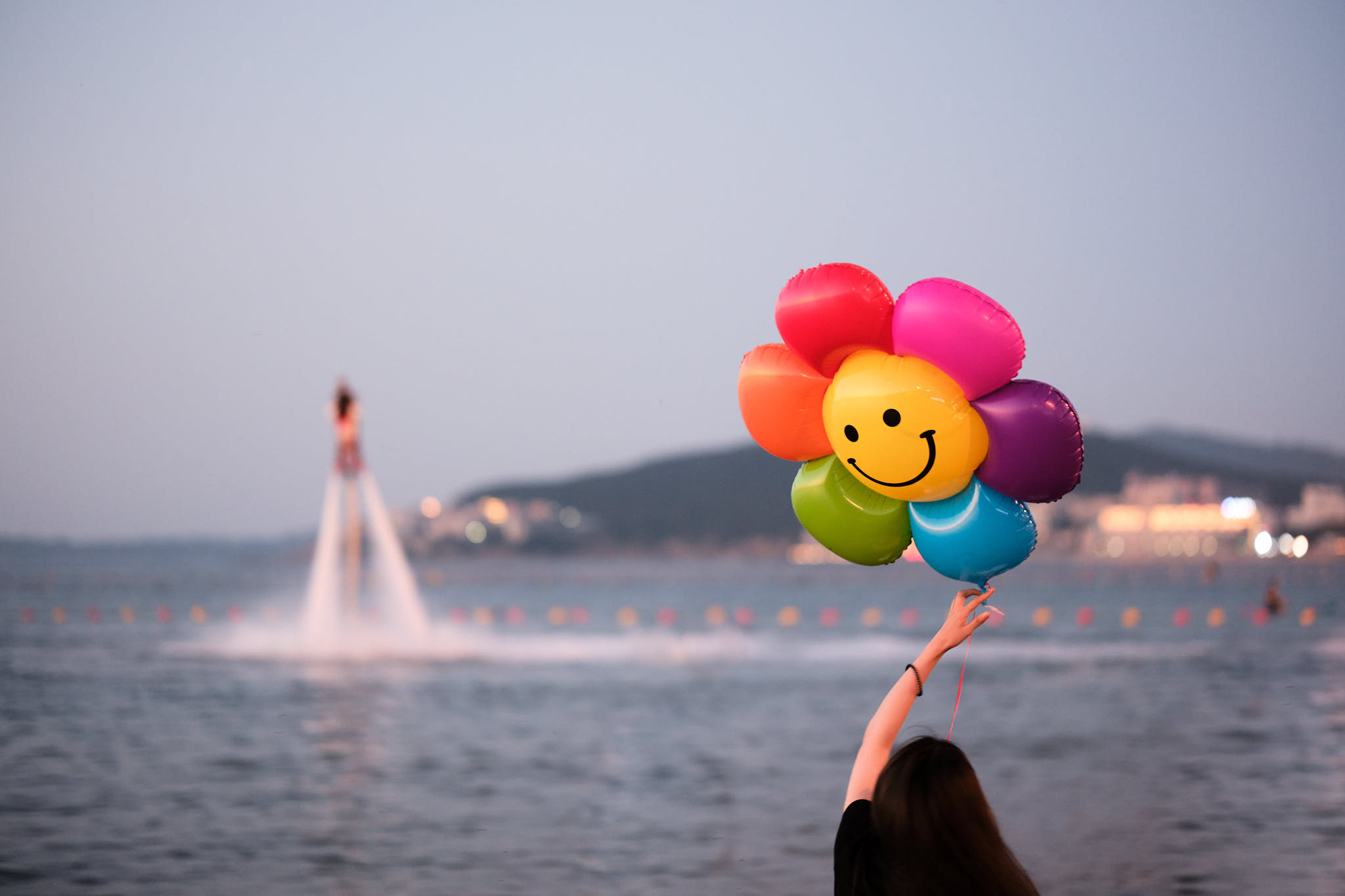
What started out during the pandemic as a weekend celebration trip to the suburbs of Beijing morphed this year into a visit to the seaside town of Weihai. Weihai is located in Shandong Province along the east coast of China. It’s about 1.5 hours by high speed train from the famous city of Qingdao and 4.5 hours from Beijing South.
“Seaside Town”
It’s always comical to hear the way my local Chinese friends describe villages, towns and cities in China. Based off their descriptions, I had expected Weihai to be a quaint seaside town, with a fishing village vibe. Upon arriving in Weihai on the excellent high speed train, I was immediately struck by the massive train station, which has two huge wings.

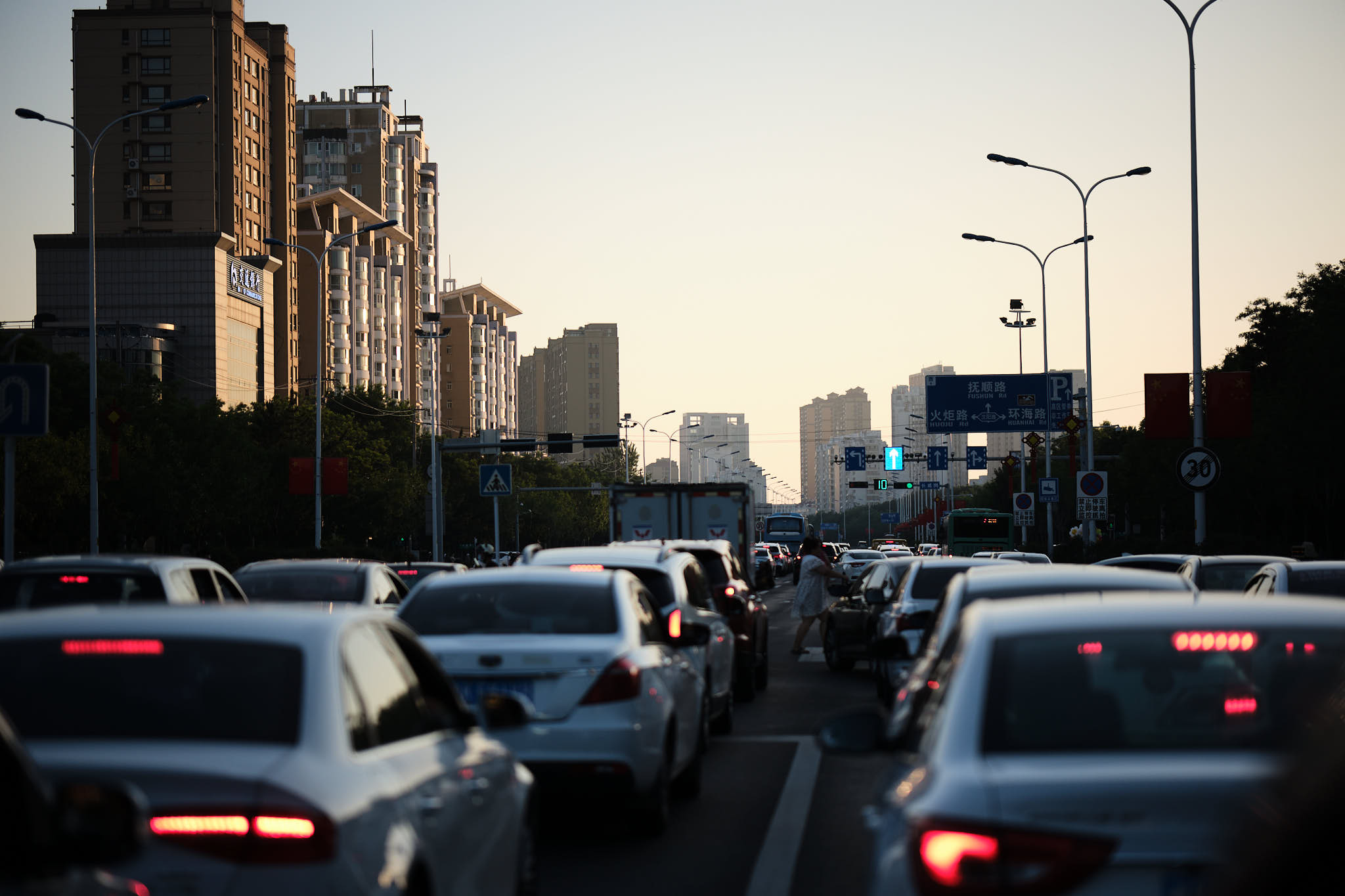
I should have known at the time that this was not going to be the fishing village I had in mind. As the taxi drove us from the relatively far train station into the town, it became apparent that this was a rather large city (by my Canadian standards). A quick check on Wikipedia showed the population in 2020 was nearly 3 million!

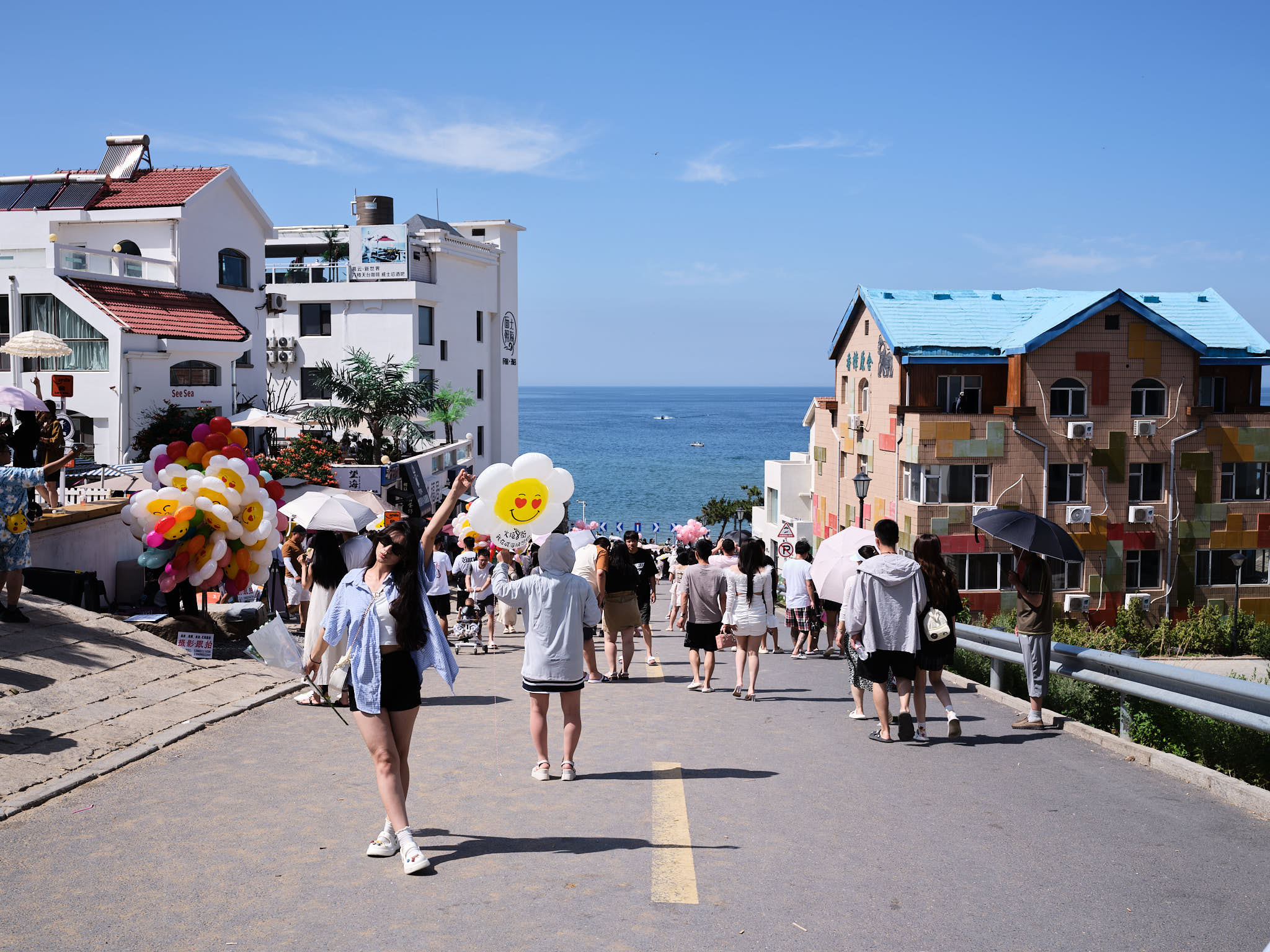
Huazhu Luxury Boutique Hotel
With the expectation of a fishing village well and truly gone, we arrived at the beautiful boutique hotel that would be our base for the next two days. I had looked for a small hotel that had enough rooms to accommodate the 11 guests, but not so much that others could book the rooms. We had the whole hotel to ourselves.
Tourism must be booming in Weihai because we could see several similar boutique hotels being built in the area. They’re all following the same modernist design of the hotel we were staying at, with a lot of wood, stone, concrete and glass.
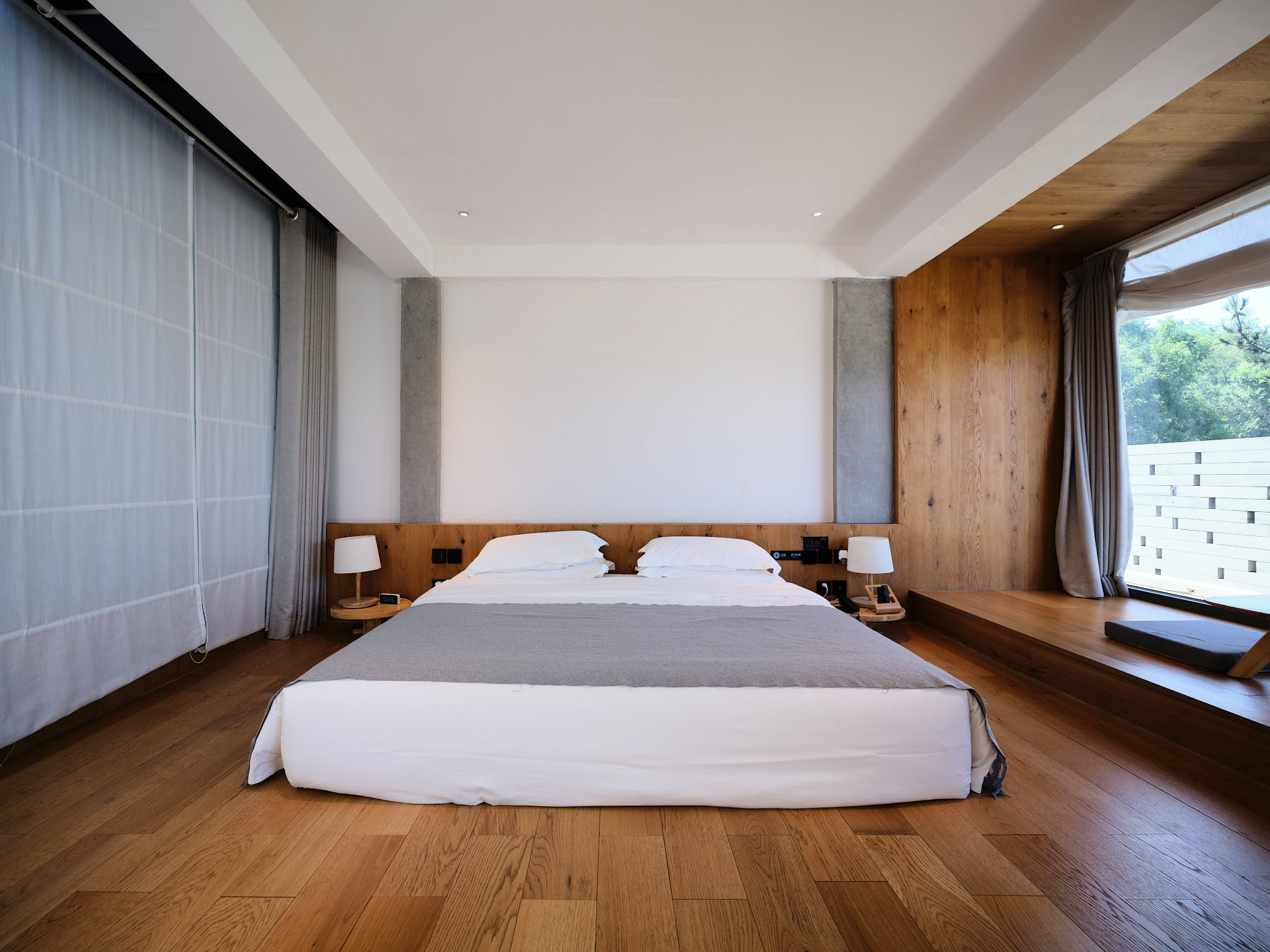
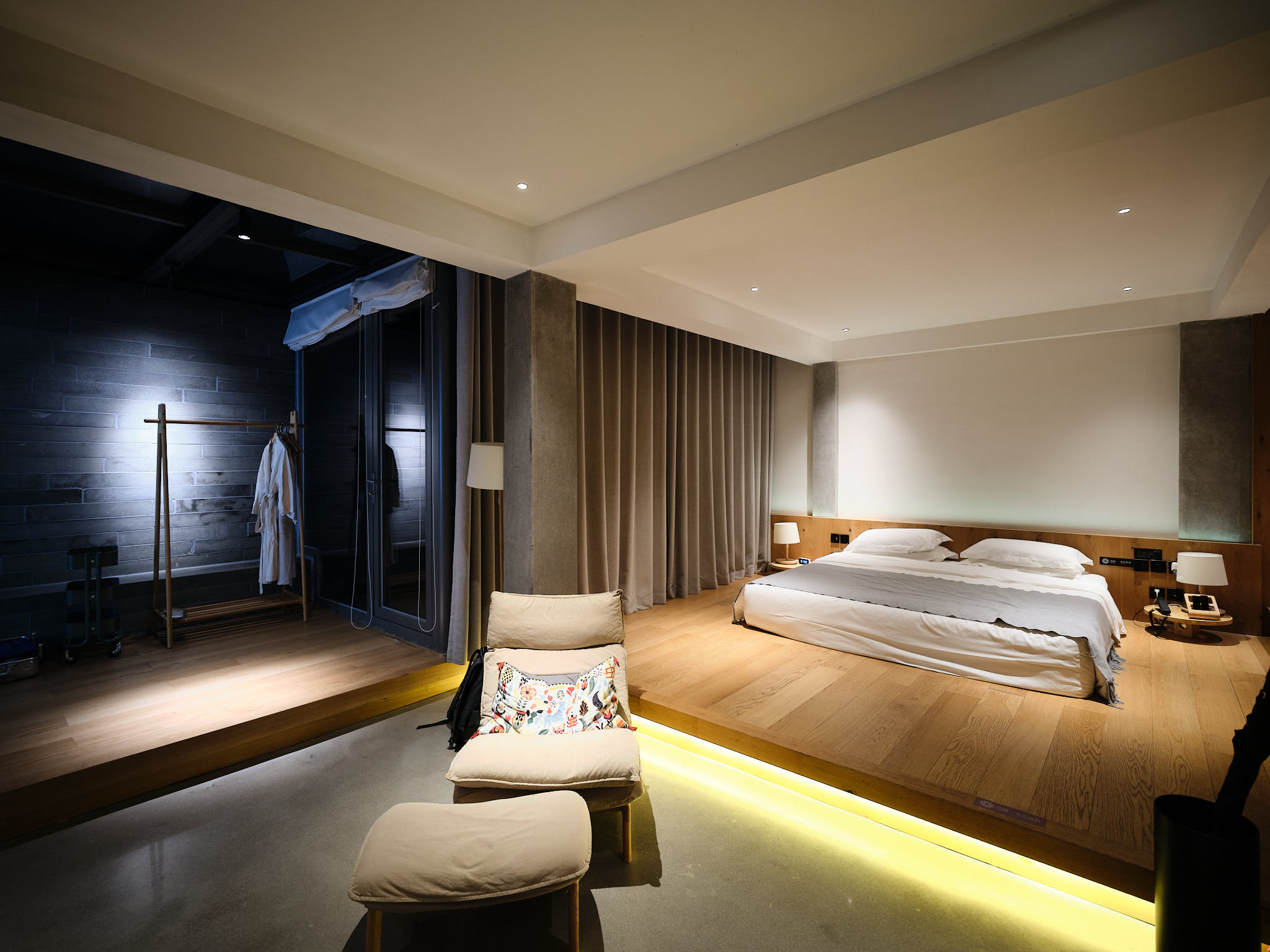
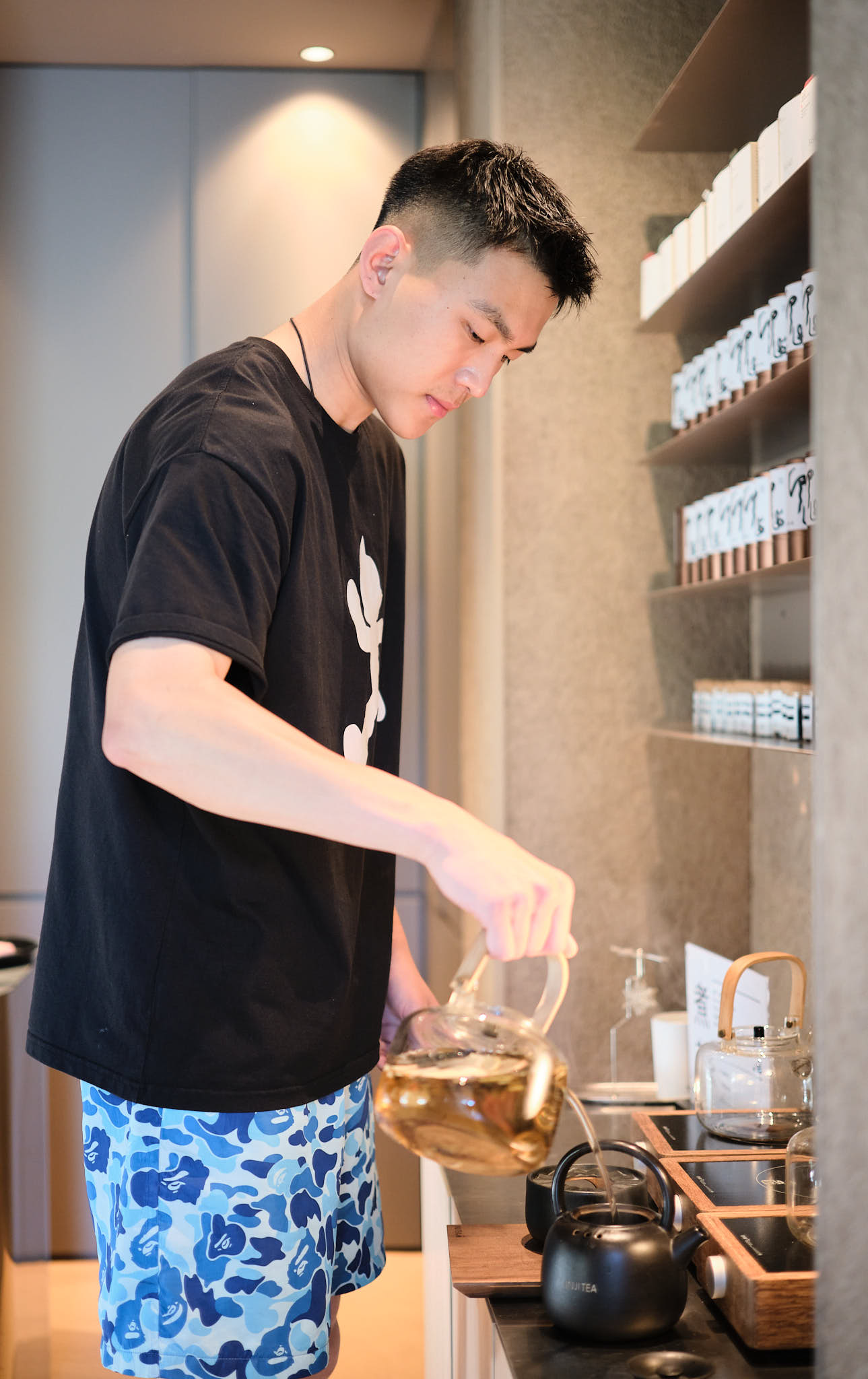
Each of our rooms had a slightly different layout, which made it fun to explore each others’ rooms. Several of the rooms had huge outdoor tubs. I know that several of my guests made good use of them during the stay. I loved the design of the rooms, with ample places to put things down, and lots of AC outlets to keep everything charged up.
The hotel also had a cute tea shop within the compound. This became our common hanging out spot during the day. At night, we congregated in the largest room which we kept for playing card games and drinking; nobody slept in that room so we didn’t care if people wanted to keep playing late into the night.
Tourism Areas
Throughout Weihai, we came across a number of tourism areas. Some of them had rather peculiar designs, often replicating somewhere else in the world. We stopped in a “European Tourism Area” for the pictures with the lavender trees. A cool site to visit is the beached ship; I understand it will soon be removed so you’d better plan to visit soon.



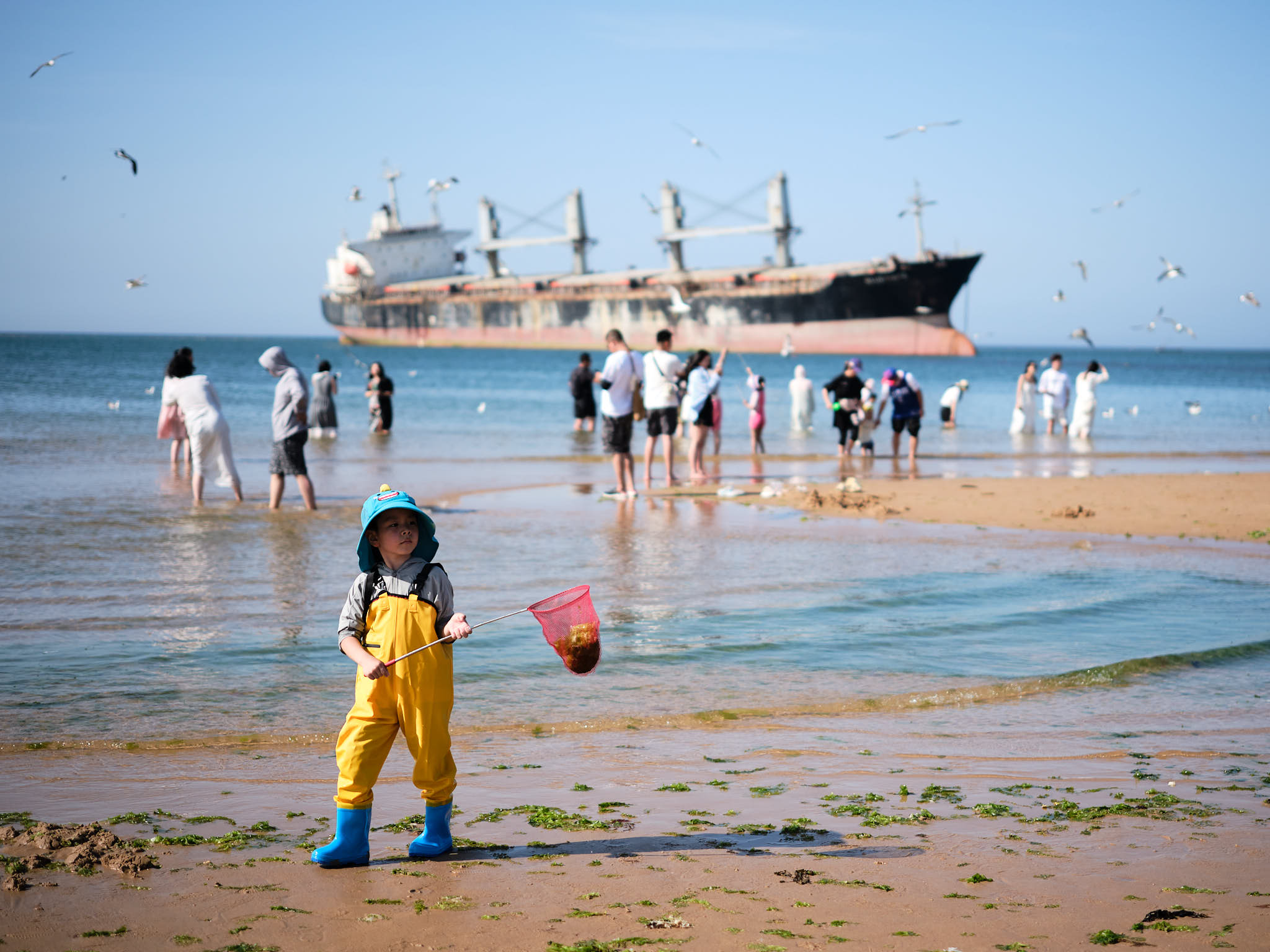


Pictures
Since I wasn’t on a tourism weekend, I didn’t keep track of where we went, so I’ll just share some pictures here. If you’re interested to go to these destinations, let me know and I can ask my friends where we went. The one place I’d recommend is to visit the boardwalk areas along the coast; they were buzzing with activity day and night.
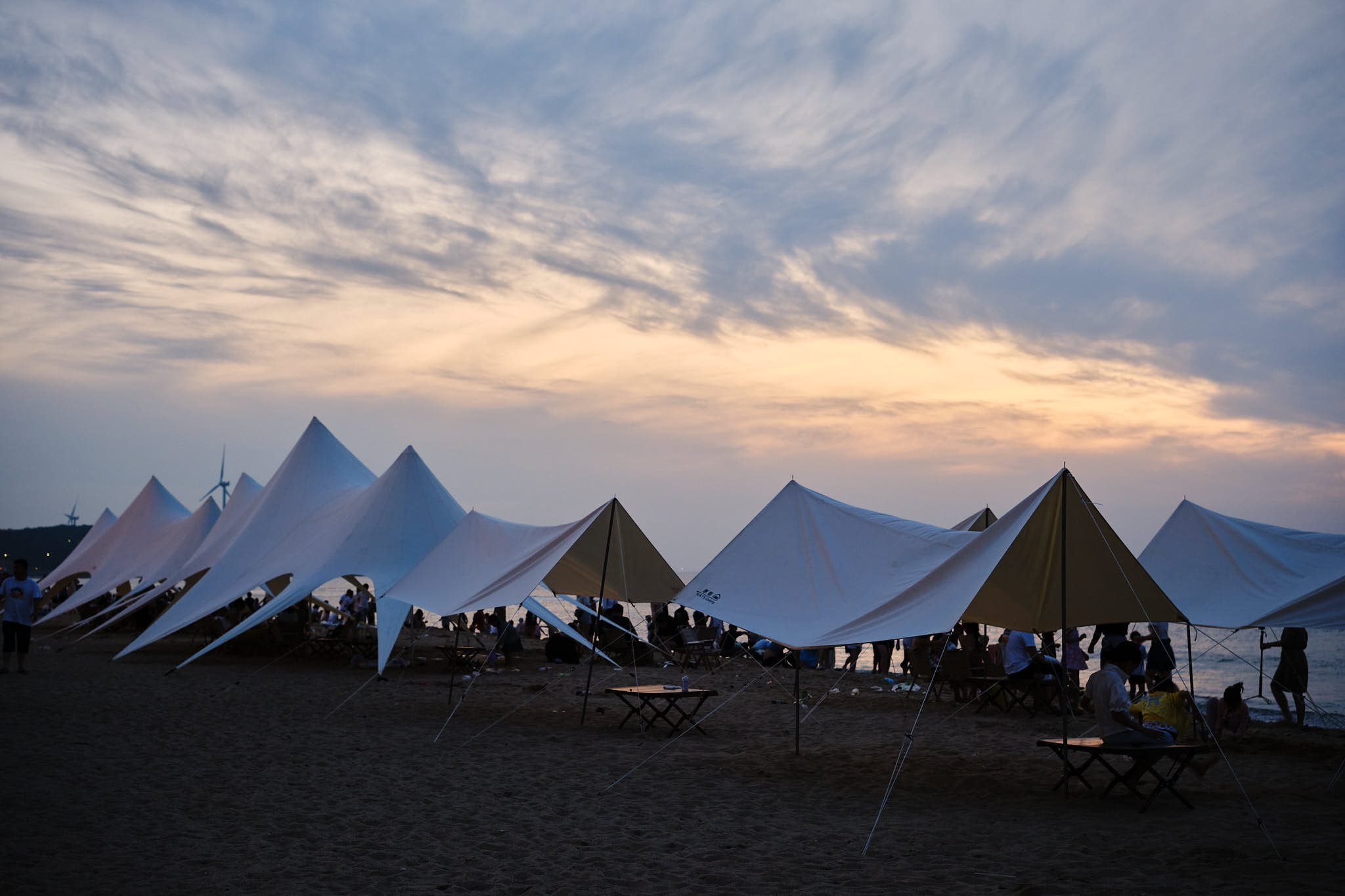

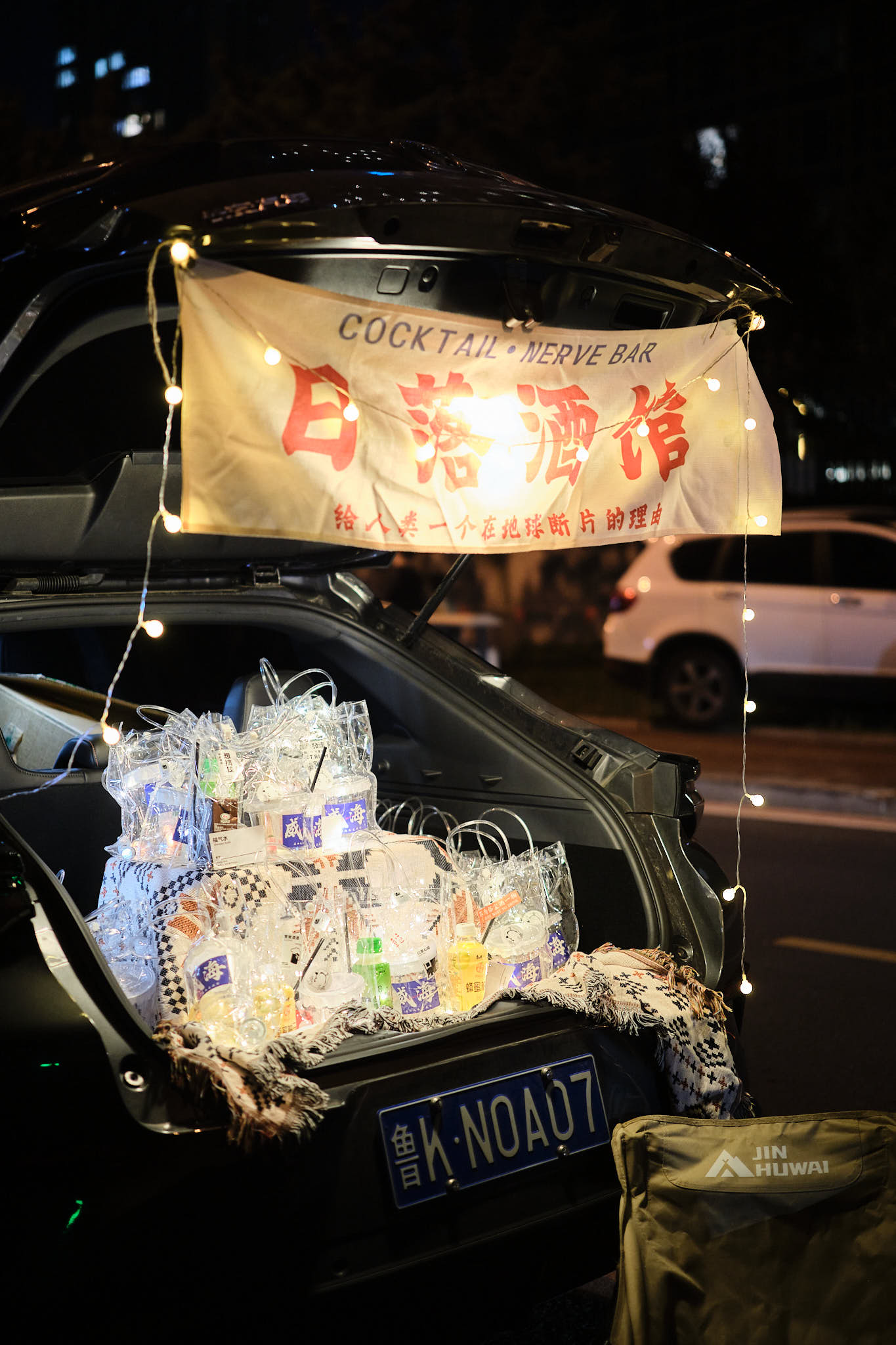
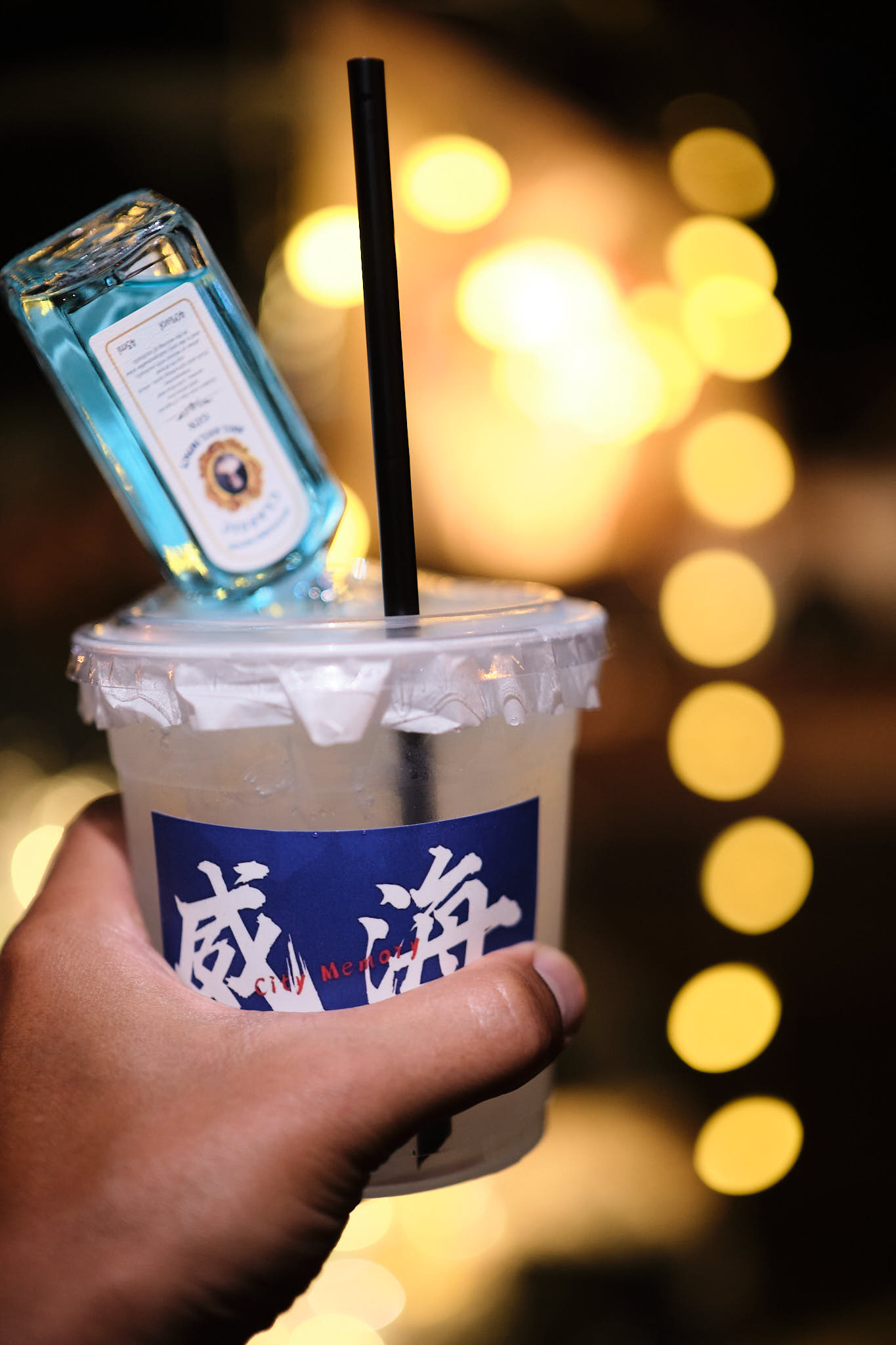
Food
I should mention the food in Weihai because it was incredible. The fresh seafood mixed in with spicy broths was mouth watering good. There was one particular dish that I had never had before in China. It’s a spicy base with fresh seafood, however it’s what came at the end that I really loved; they put thick noodles into the base after all the seafood juices had become one with the base stock. The English translation is mala clams with noodles in case you want to try it.
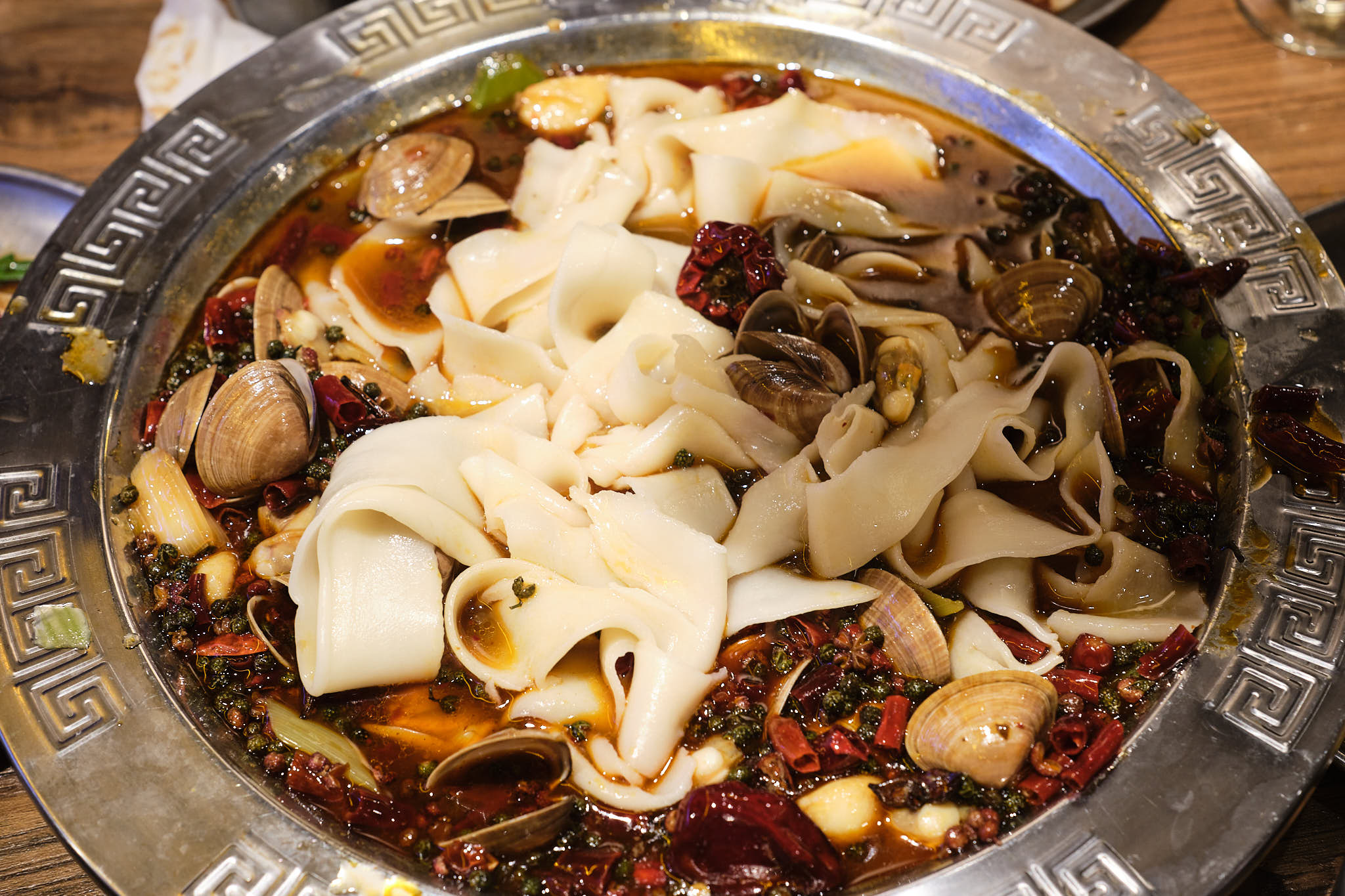
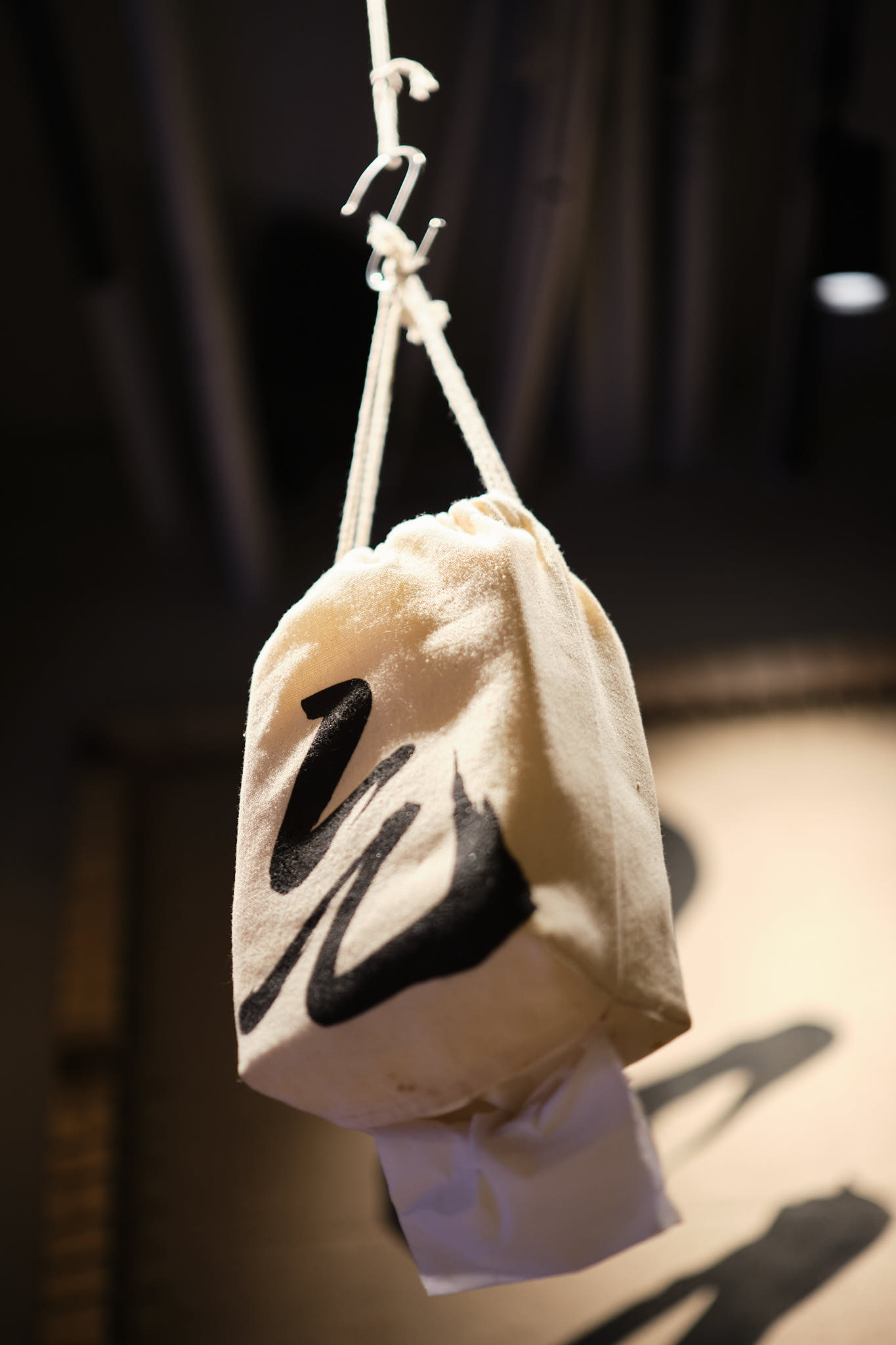
A Big Surprise
Since a lot of work goes into planning the weekend, my friends like to do something to surprise me during the celebration. Last year, while we were out exploring the suburbs of Beijing, they had arranged for an elaborate dinner celebration that would not look out of place at a wedding! I did not expect them to be able to top that this year and had no expectation of it.
However, they exceeded any expectation, and came up with something that could only be implemented in China. We often use the acronym “OIC” for “Only in China”, and this was certainly the case. Let me take you through what I experienced on the Saturday night.
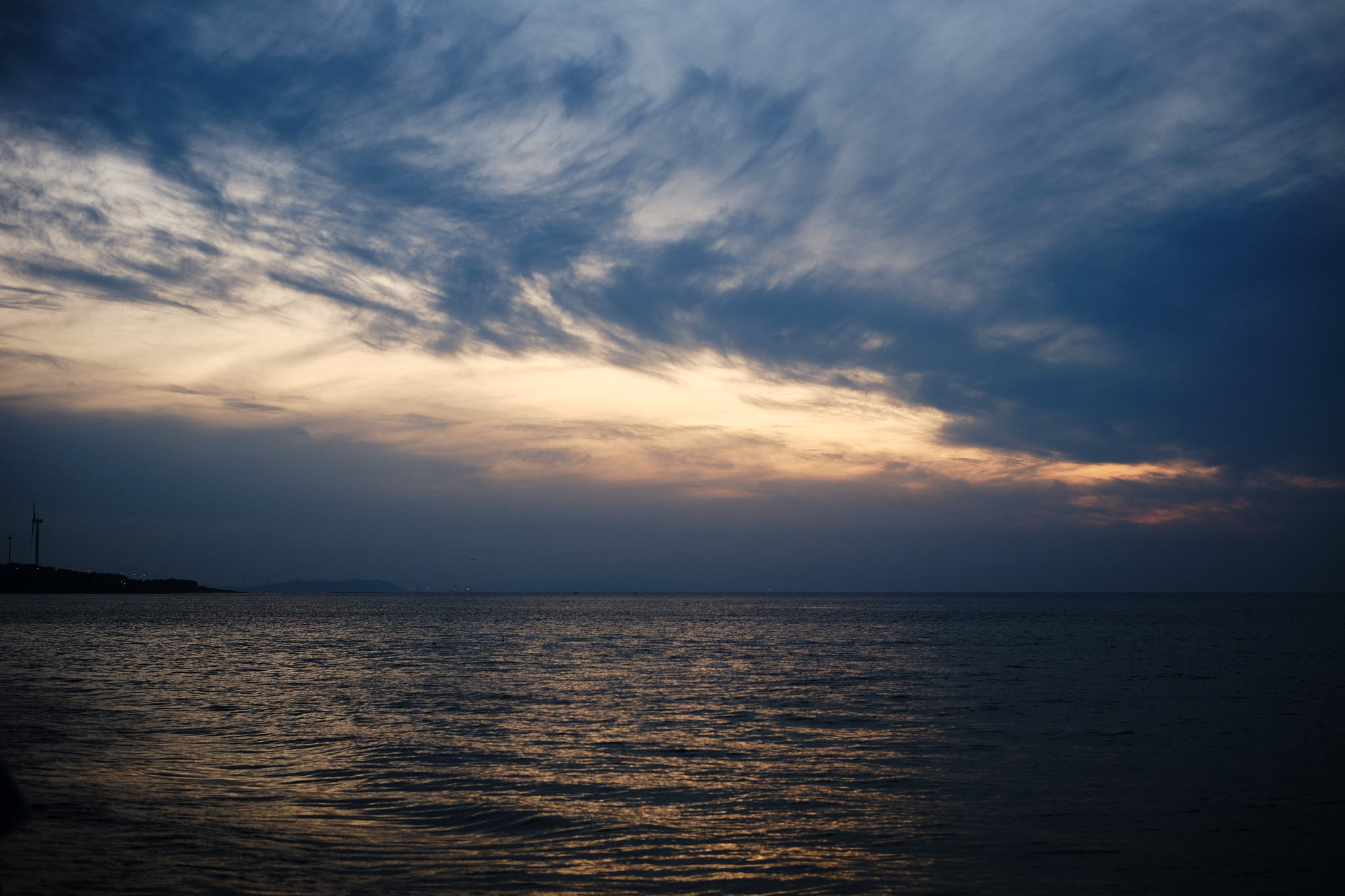
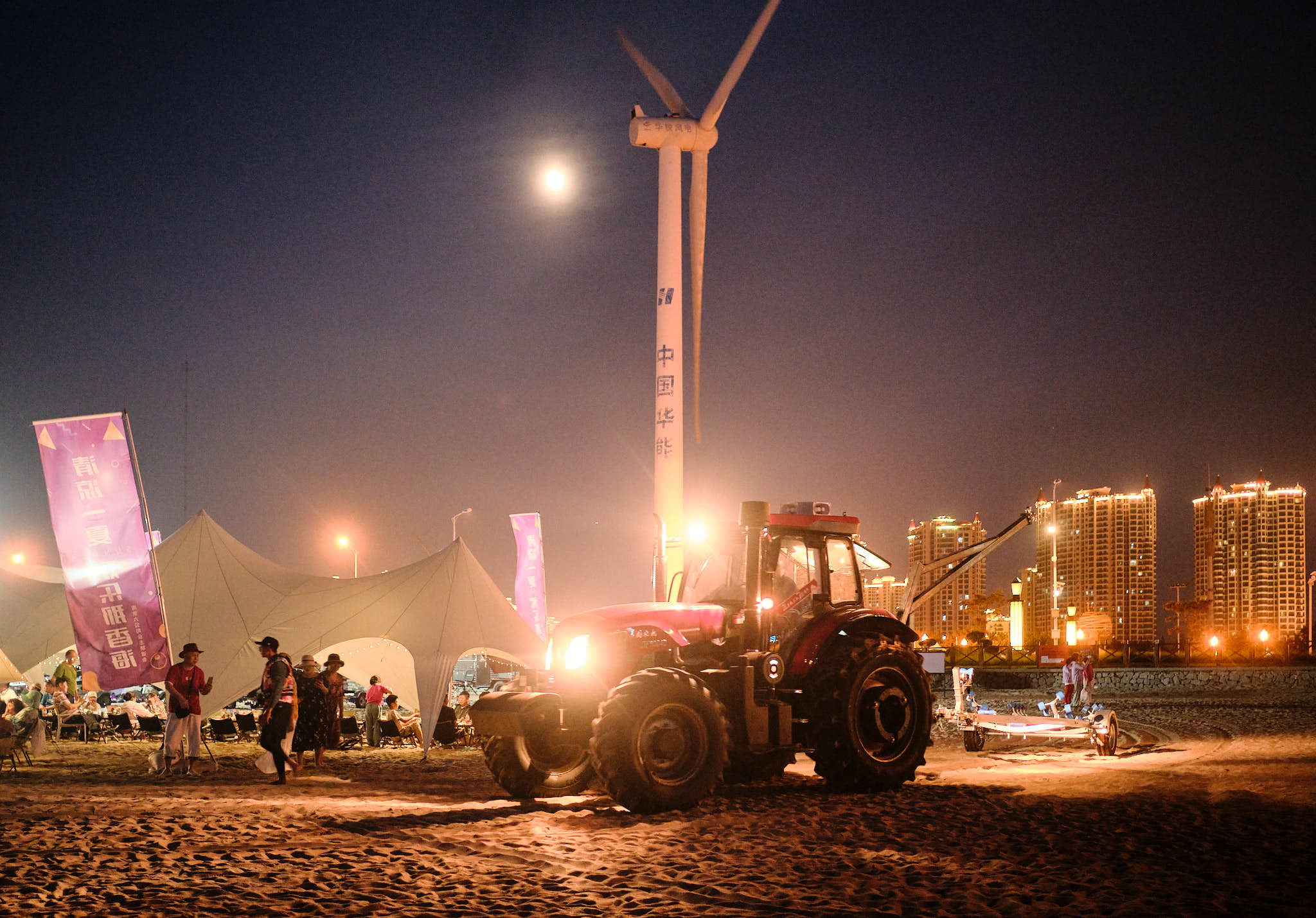
We had been to the shipwreck and the rather odd European tourist area. We were now at a beach where we watched the sunset to throbbing techno music coming from all directions. A few of my friends had disappeared and I had assumed they were up to something, perhaps getting a VIP table at one of the beach clubs.
The friends returned and said that we’re going to get some drinks at a beach club. I thought I had nailed it in predicting what they had in mind. As we approached the beach club, the DJ came on the microphone and told the crowd it’s my birthday and asked everyone to sing the now world famous Haidilao Happy Birthday song.
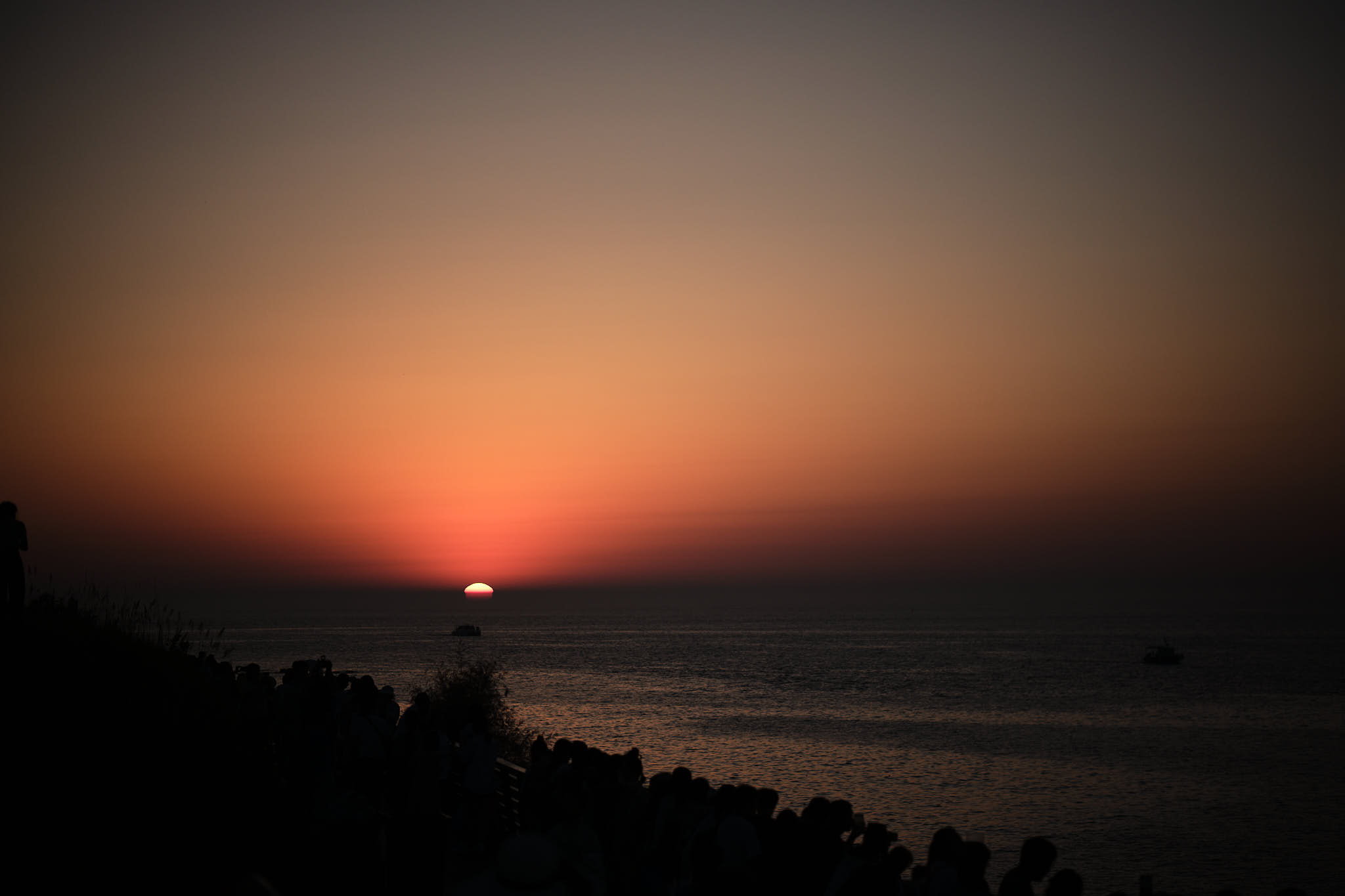
Several thousands of people all sang the song as I was walking up the middle aisle entering this huge beach club. That in itself was already amazing, to have all these strangers singing their hearts out wishing me a happy birthday. We did indeed get a VIP spot on the beach, overlooking the thousands of people below us seated on the sand.
I cut the cake, made several toasts with my friends and some of the strangers who had come up to give their birthday wishes in person. Then the DJ came on the microphone again and said something in Chinese that I didn’t understand. He put Katy Perry’s Firework song on at full volume and then…
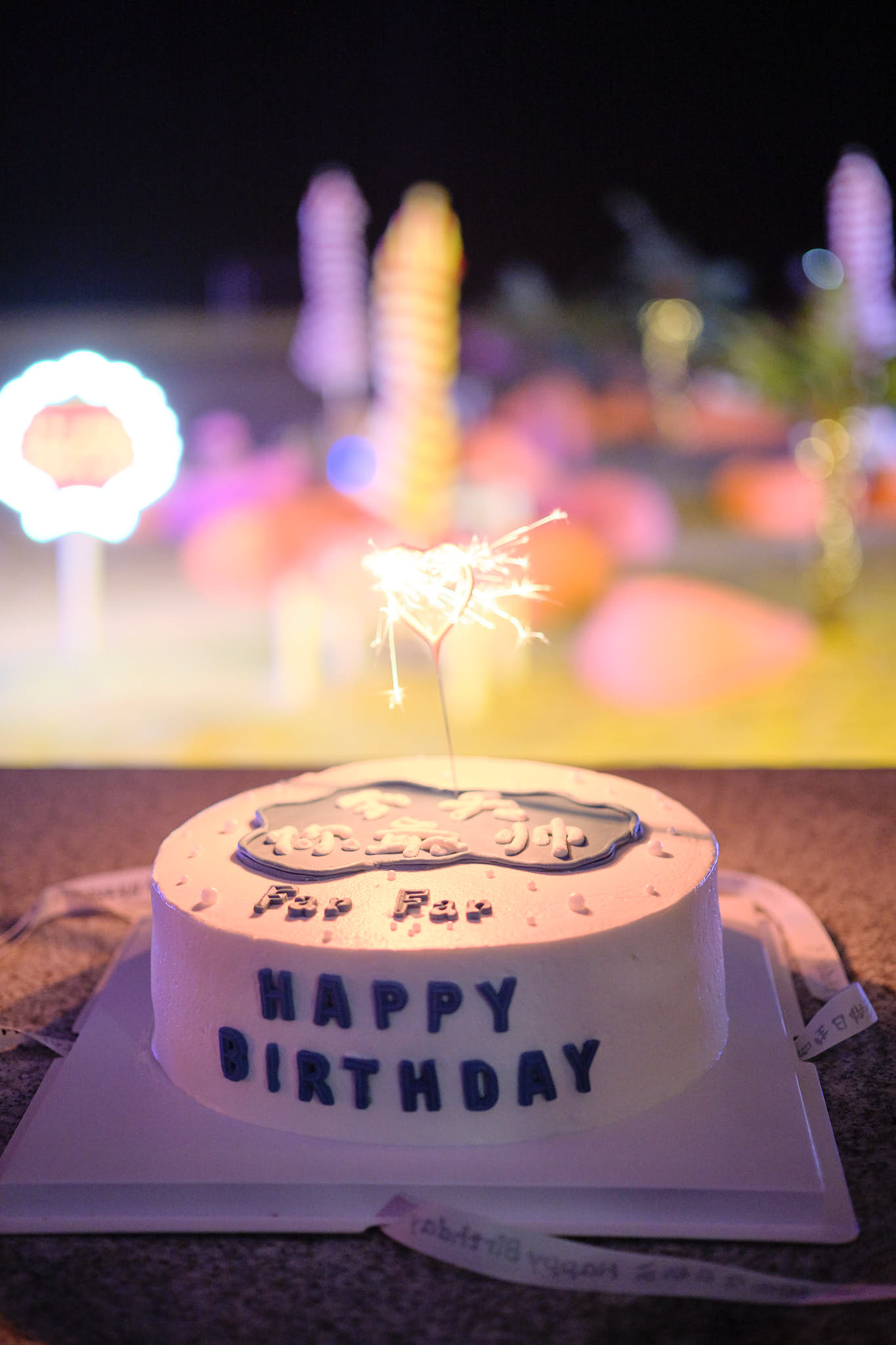
Fireworks! My friends had arranged for beachfront fireworks to celebrate my birthday. It was an elaborate display that went on for about eight minutes! The thousands of strangers on the beach got to enjoy an unexpected fireworks show, literally a few metres in front of them. It was spectacular and something I highly doubt I’ll ever experience again.
It was magical; I was literally in tears. This is what I love about living in China. The people are just amazing. The way they open their hearts to foreigners like me is truly special. It’s a memory that will last a lifetime and something I’ll treasure forever. Thank you guys and thank you to my readers for allowing me share this experience with you.
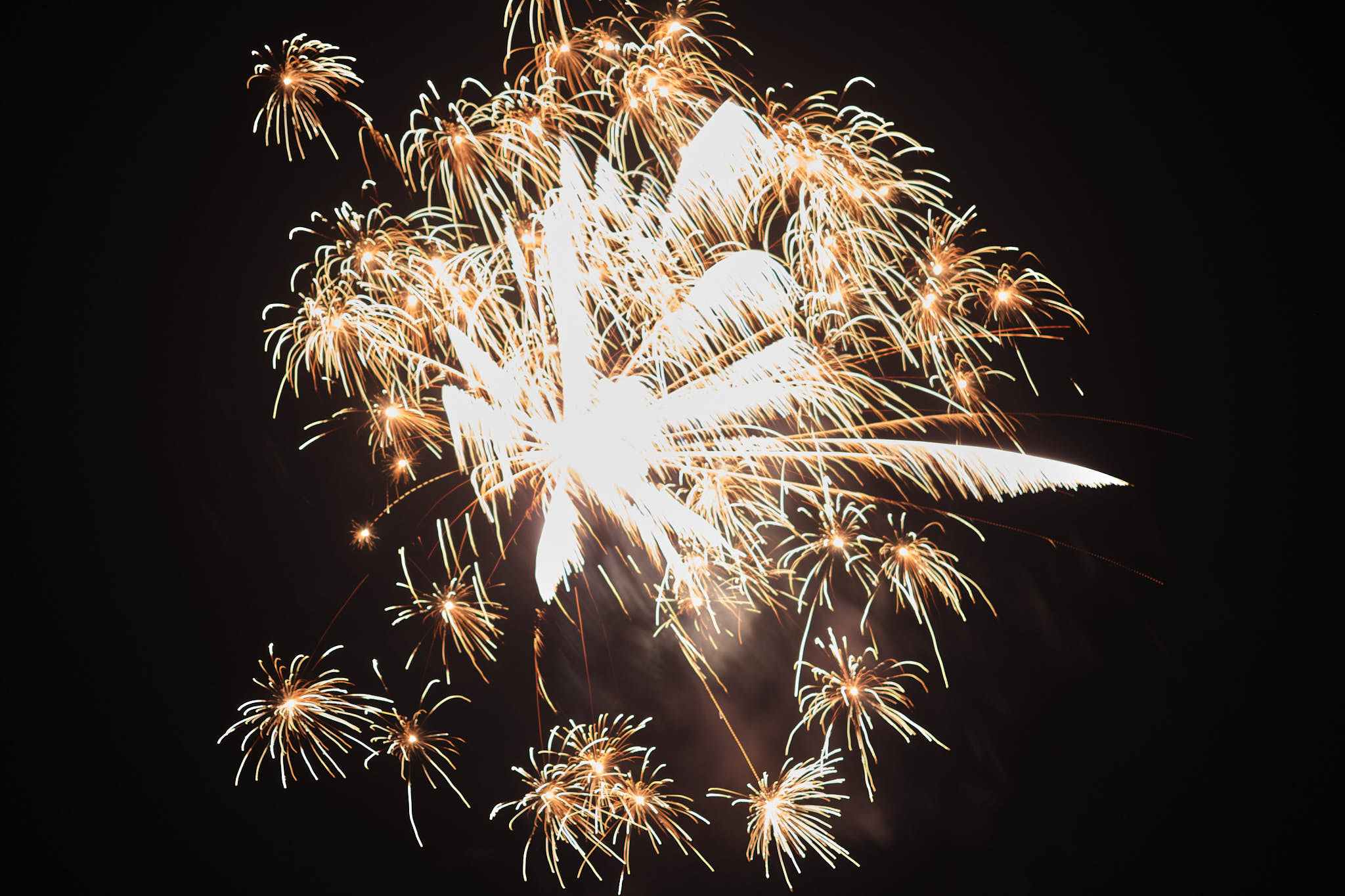
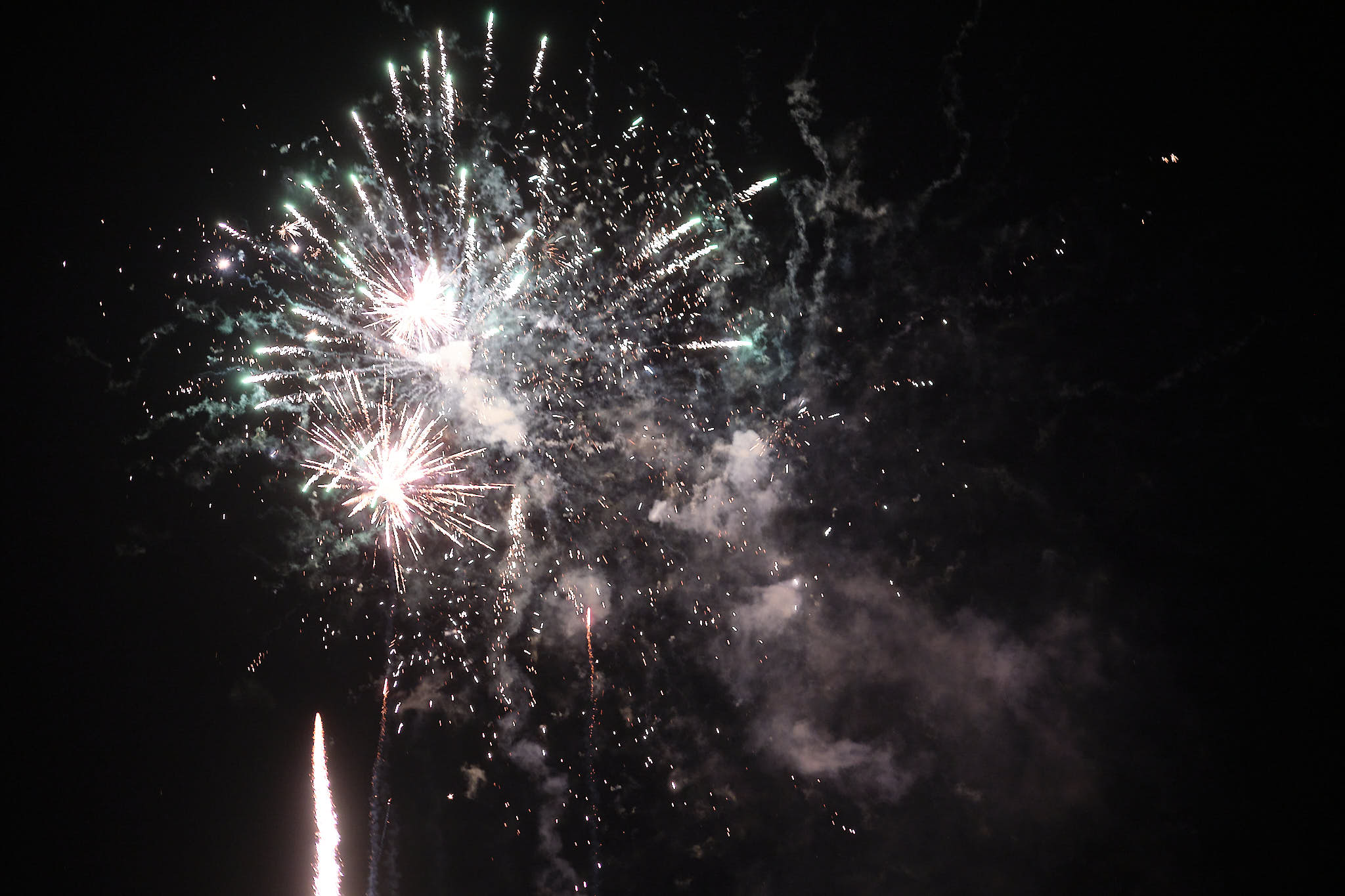
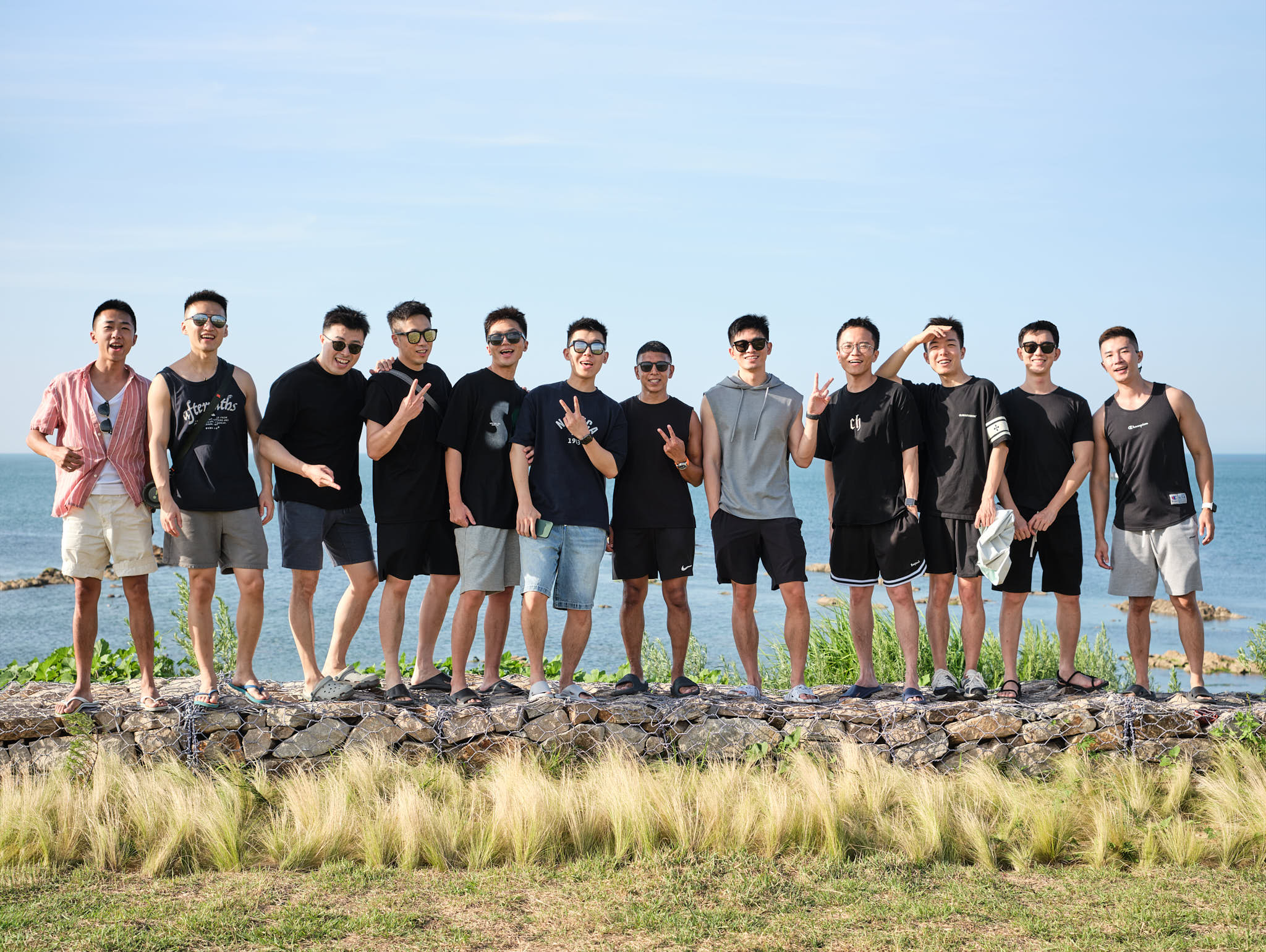
Discover more from fcracer - Travel & Photography
Subscribe to get the latest posts sent to your email.
First and foremost, I really enjoy your blog and the images you share.
I note 11 days ago you said you bought a Sony A7R5 but nearly all these are taken with a XT5 which you were very frustrated with. Are you still waiting on lenses for the Sony or are you just not getting along with it?
I’m asking for selfish reasons. I did the same thing, had a XT5 and had issues with the firmware and AF, got frustrated and bought a A7RV. Now I have it I can confirm it’s pretty well perfect in the results department. AF is magical and image quality is unmatched (other than the Fuij 50R I had for awhile). I just don’t enjoy using it and I miss my flawed (AF) Fuji . Pixel peeping the image quality difference is very evident but for 98% of the images Fuij APS is doing a great job.
Any comments on how you see this ending up?
Cheers,
Phil
Hi Phil, thank you for writing in and for the kind words about the images; I appreciate it.
What is it about the Sony that you don’t like? What aspects of the Fuji are pulling you back?
For me, it was actually on this trip to Weihai that my frustration with the X-T5 boiled over to the point I decided to get the A7R5. In those very special moments where my friends had surprised me with the group happy birthday song or when the fireworks went off, I have very few in-focus images to choose from because my friends couldn’t figure out the correct setting to use on the X-T5.
Subsequent to that trip, I picked up the Sony A7R5, the Sony 35MM and 50MM F1.4 G-Master lenses, the 35MM and 50MM F2 Sigmacrons (my new nickname for them) and the Sigma 85MM F1.4. I’ve been using the Sony since it arrived and I’ve managed to replicate the Fuji experience by choosing lenses that have aperture rings. Thus far, I’m very impressed by the Sony. I took it out on a boat trip in Hong Kong last weekend and came away with 99% of images tack sharp, regardless of who was behind the camera.
The downsides thus far:
The positives thus far:
As I use the camera more, I’ll certainly have more thoughts on it, which I intend to share in a dedicated post. That post will be from the perspective of a Fujifilm user, since the last thing the world needs is another generic A7R5 review 🙂
Hope the above has been helpful.
Very helpful and yes, I very much agree with your findings thus far. I’m going to stick on a SigmaCron or a Sony compact prime and see if I get on better with the A7RV. In addition to RNI there’s Cobalt, I really like their Porta interpretation.
I still have a X-T2 and was playing with that yesterday and forgot what a great camera that is. AF worked great for some family shots. A lot may have improved in the X-T5 but the AF improvements are pretty marginal for 3 iterations of XT’s. The 5 drove me nuts where the in focus green dot in the EVF didn’t equate to an in-focus result.